My recent compulsion to spend what little disposable income I have on photo books does not seem to be relenting. With several new additions to the library this month, I’ve been thinking more about the books I recommend to friends, peers, and to my students. I notice that my recommendations span monographs, collections, theory, and essays, and all lay a path to better understanding the school of street photography that I follow.
The first article in this short series was titled Required Reading for Street Photographers and, with the exception of one salty contrarian, was well received. Those were books that I believe one must read for a strong start in the practice of street photography. As this series continues, I will list further recommended books that supplement or complement those already chosen.
Snaps – Elliott Erwitt (Phaidon. 2001)
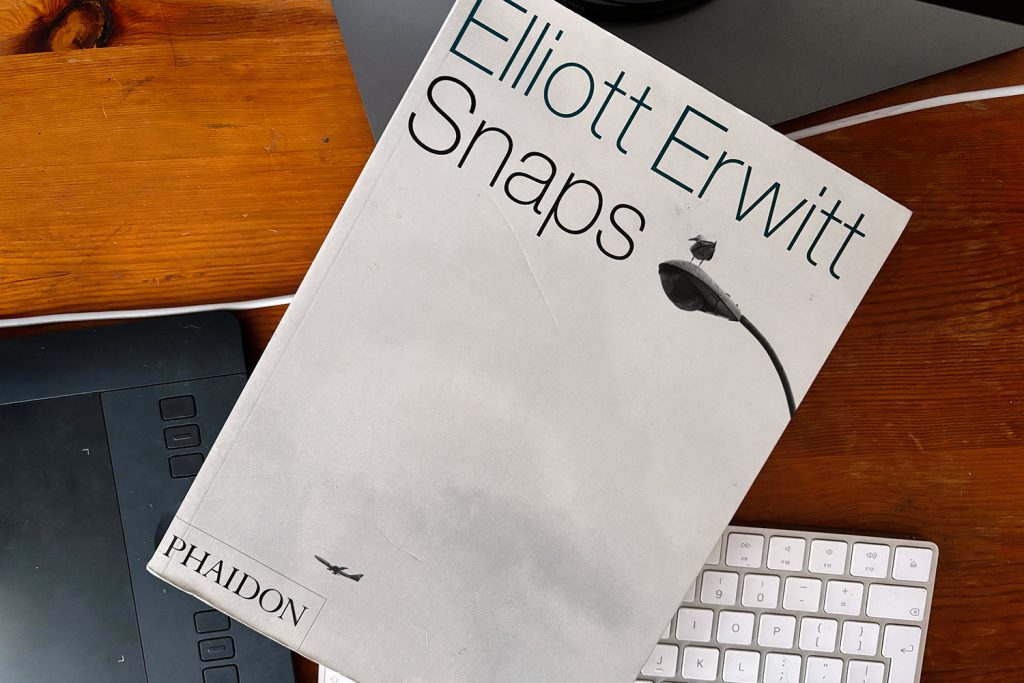
Elliott Erwitt is often quoted as having said that all the technique in the world doesn’t compensate for the inability to notice. In this extensive collection, Erwitt provides the reader with a comprehensive demonstration of his exceptional capacity for noticing. Snaps is not only a great introduction to the photographer’s work but at the time of its 2001 publication, a sweeping retrospective. It’s astonishing how much work Erwitt has made since. The photographer’s distinctive, witty style is oft-imitated (not least by your author) but never bettered. Whether famous faces or public passers-by, the peculiar, the curious, and the humdrum all come alive in front of Erwitt’s lens.
Following Murray Sayle’s insightful introduction, the book opens with North Carolina, 1950, that of the segregated water fountains, one of Erwitt’s most enduring images. Over the next 500-or-so photographs, split neatly across nine one-verb-titled chapters, there are photographs of gesticulating presidents, Polish confessions, naked nudists, evocative emotion, disarming Americana, and a great many dogs. Everything one might expect from this master of photography whose work has been described as a study and celebration of life. Snaps is a perfect introduction to a wry, humorous, empathetic tradition of street photography and that is continued in our next book.
Earthlings – Richard Kalvar (Flammarion. 2007)

The conceit of Richard Kalvar’s first monograph Earthlings is that the photographs are a view of human beings as an alien race. As Kalvar himself says, it is almost as though he had come from another planet to observe the Earthlings and the strange situations in which they find themselves. I spent some time in Paris with the photographer last year and it was a formative, decisive experience for me, at the time a year only since returning to the practice of street photography. Particularly as, in my own photography, I share his proclivity for odd situations and the connections, expressions, gestures, and emotions that leak from them.
Kalvar often talks about the French word, disponible. To the photographer, it translates to being open and ready to photograph. This is how he makes his work, receptive to the unknown and the unforeseeable. As the reader pages through this collection of 88 photographs, they find that each tells or implies small dramas playing out within the 4 walls of their rectangles. At capturing these, Kalvar is a master and Earthlings is his magnum opus (if you may excuse the rather obvious and unintentional pun). This book, the photographs within, and the loose concept binding it all together have had a profound effect on my return to photography so it would be remiss of me not to recommend it somewhat early in the series.
Glasgow – Raymond Depardon (Seuil. 2016)
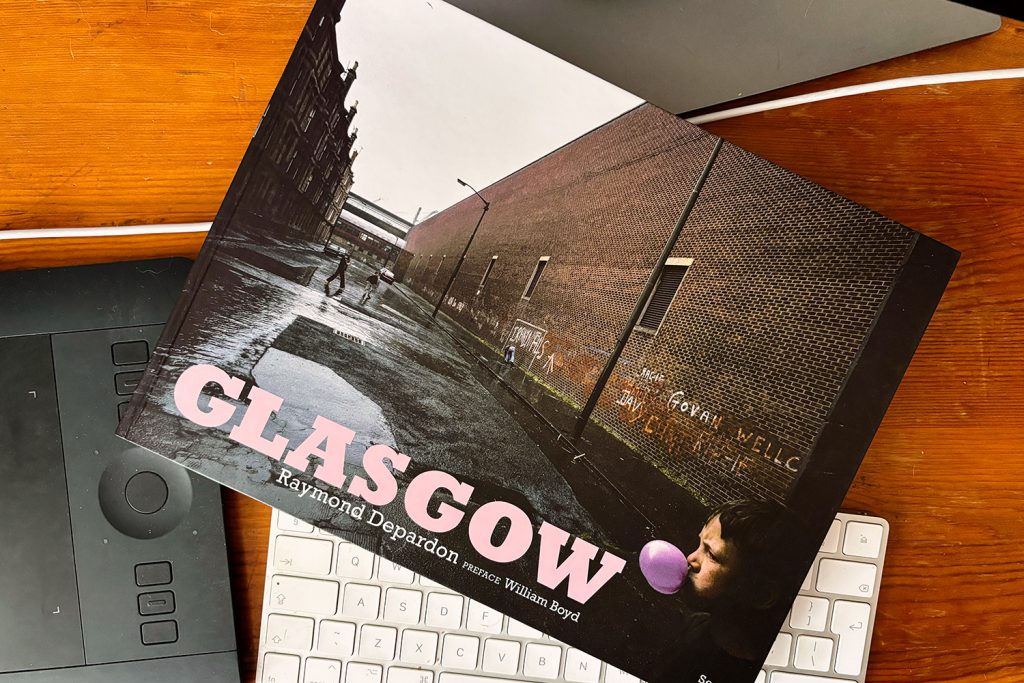
43 years ago, just over a year after I was born in sleepy Bellshill, The Sunday Times brought French photographer Raymond Depardon 15 miles from me to photograph both the rich and the poor of Glasgow. Finding the more affluent citizens of the city less interesting, Depardon wandered the poorer areas of the city and made some of the most striking photographs of the nation’s second city. The Times chose not to publish and the photos were confined to a box for decades until uncovered for an exhibition of the photographer’s colour work. In 2016, the photographs were collected together for the first time in a book published by Seuil. Glasgow by Raymond Depardon is staggering.
My early memories of Glasgow are over a decade later and though a lot had changed, much had not. I remember areas south of the river, or in the east end that even in the 90s had not seen any appreciable improvement. In Airdrie, my home town, 15 miles to the east, there were areas of great affluence and those of great poverty. To that degree, the town was a microcosm of the city. Depardon’s photographs, then, have great nostalgic appeal, but, they are also astonishing, empathetic pictures of a proud and determined people.
It is in Depardon’s photographs of the Glaswegian children, however, where the collection comes alive. The vivid pink of a little girl’s dress, or a luminous blown bubble of gum, artfully set against the steel grey concrete sky of Glasgow speaks to the playful warmth, and curious nature of the city’s young. This is the epitome of empathetic street photography.
Street Photography and the Poetic Image – Alex Webb and Rebecca Norris-Webb (Aperture. 2014)
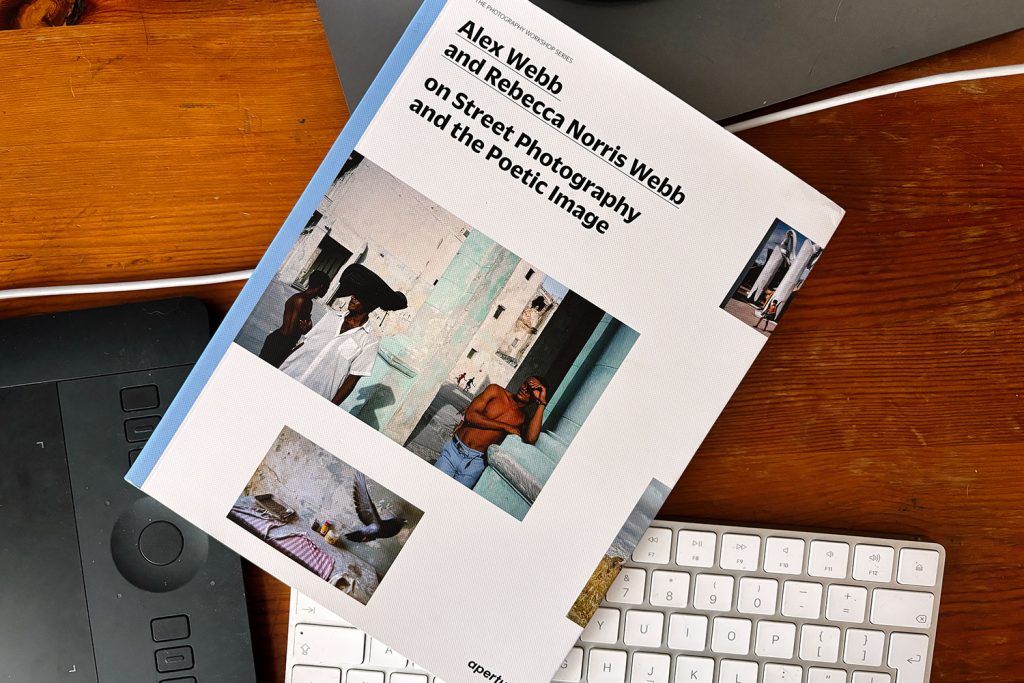
I was slow to appreciate the compositional and serendipitous majesty of Alex Webb’s street photography. Though I didn’t ignore colour street photography, my preference was for black and white pictures and as I began to make photographs of my own, I concentrated on reading the photographers working in monochrome. When I felt comfortable in my own black-and-white practice, I started to spend more time with books by Martin Parr, Harry Gruyaert, and the aforementioned Alex Webb. Of course, it was through Mr Webb that I discovered Mrs Webb, or more accurately Rebecca Norris Webb – the pair, of course, creative as well as romantic partners for many years. In 2014, the pair wrote this book for Aperture, the second of the publisher’s Photography Workshop series.
This is an enjoyable, thoughtful wander through the poetic possibilities of street photography. Chapters in the book are short and informative, and it isn’t always clear if the text accompanies the photographs, or if the pictures illustrate the text which makes the reading even more entertaining and educative. As one may expect from Aperture, the photographs are well-presented and the colours are as vivid as hoped. For beginners, one might better suggest Matt Stuart’s book, however, Webb and Norris Webb occupy different creative niches within street photography so the more oblique advice that emerges from their individual perspectives on their respective practices complement one another so well, especially if the reader comes to the book with an existing appreciation of their work.
Street Philosophy of Garry Winogrand – Geoff Dyer (University of Texas Press. 2018)
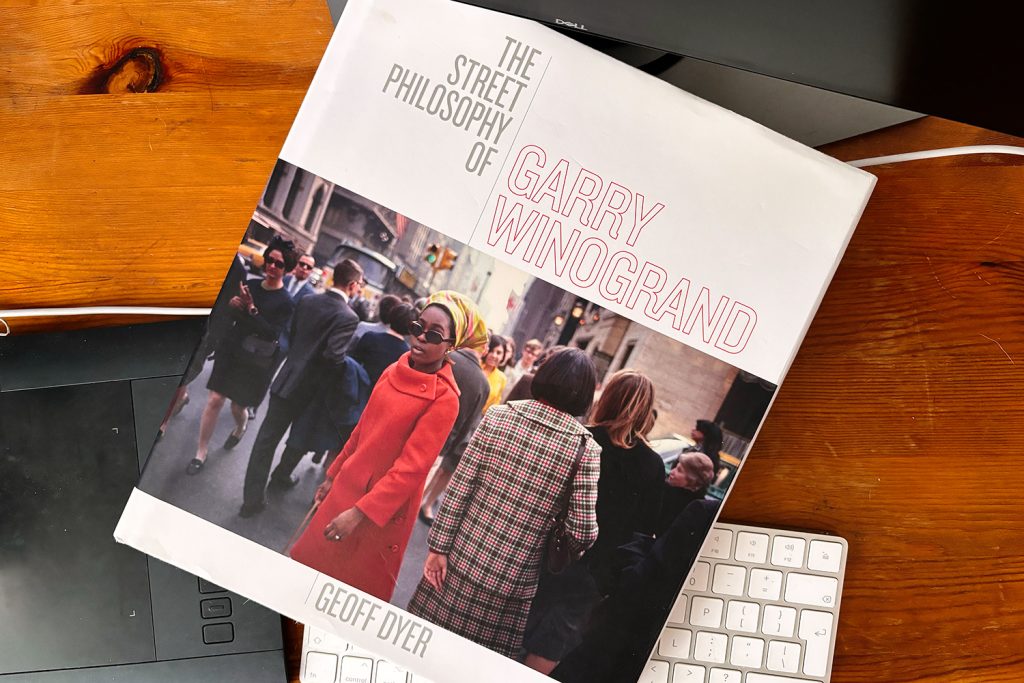
Garry Winogrand is the only name in this list to be seen, explicitly, in the first of this series, appearing as he does in the New Documents, 1967 book I chose as required reading. Nevertheless, he has such a profound and lasting effect on what is now considered classic street photography that I felt it was fitting to include him again. This time, a book modelled on John Szarkowski’s collection of photographs by Atget. This is a notable collection of 100 photographs spanning the photographer’s career, some unseen before publication, accompanied by a perspicacious critical essay by writer, Geoff Dyer.
Despite the title, if one is expecting a pedagogic analysis of Winogrand’s stated philosophy of street photography then one is destined to be disappointed, and while that is what I originally hoped for, I nevertheless came away happy that Dyer let loose with his own playful, enthusiastic interpretations of Winogrand’s work. Winogrand’s famous quote that he photographed to find out what something would look like photographed is as transparent as his philosophy was. I’m not even sure Winogrand often understood what drew him to his subjects, so it is a tough ask to expect Dyer to know. Nevertheless, the essays that accompany 100 photographs from Winogrand’s extensive archive provide enough analysis, interpretation, and creativity to spark both motivation and inspiration in equal measure.
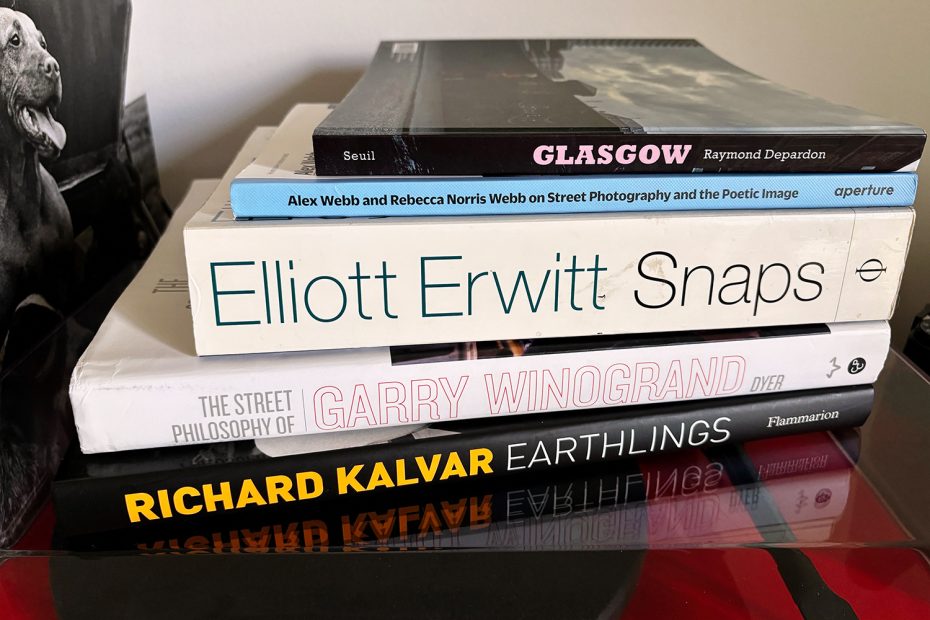
Great list Neil. I have three of those books (Depardon, Webb / Norris-Webb and Winogrand). The other two look like must-gets too.
Thanks, Andrew. I’ll keep this series going, I think. And when I run out of books I have – I’ll just have to buy some more. 🙂